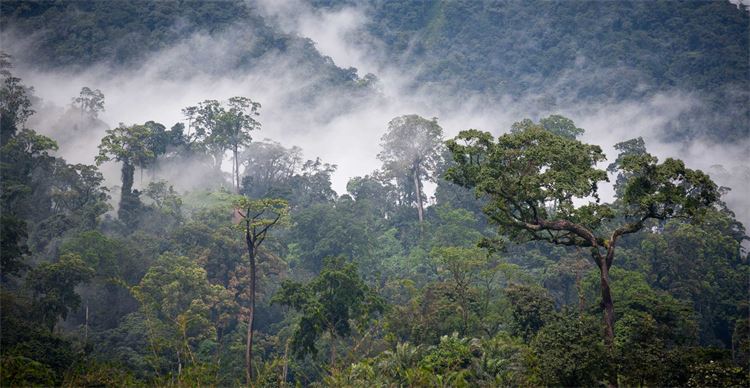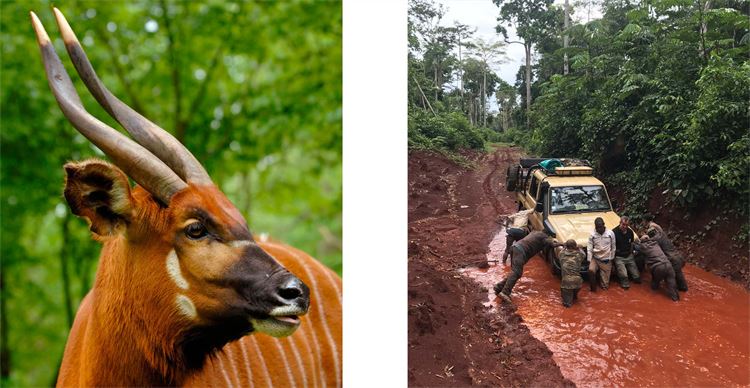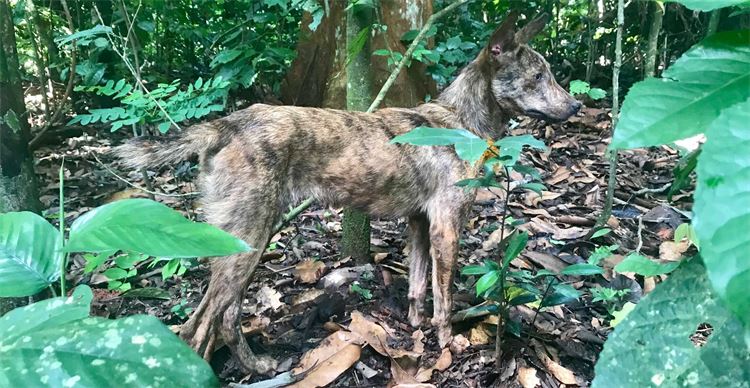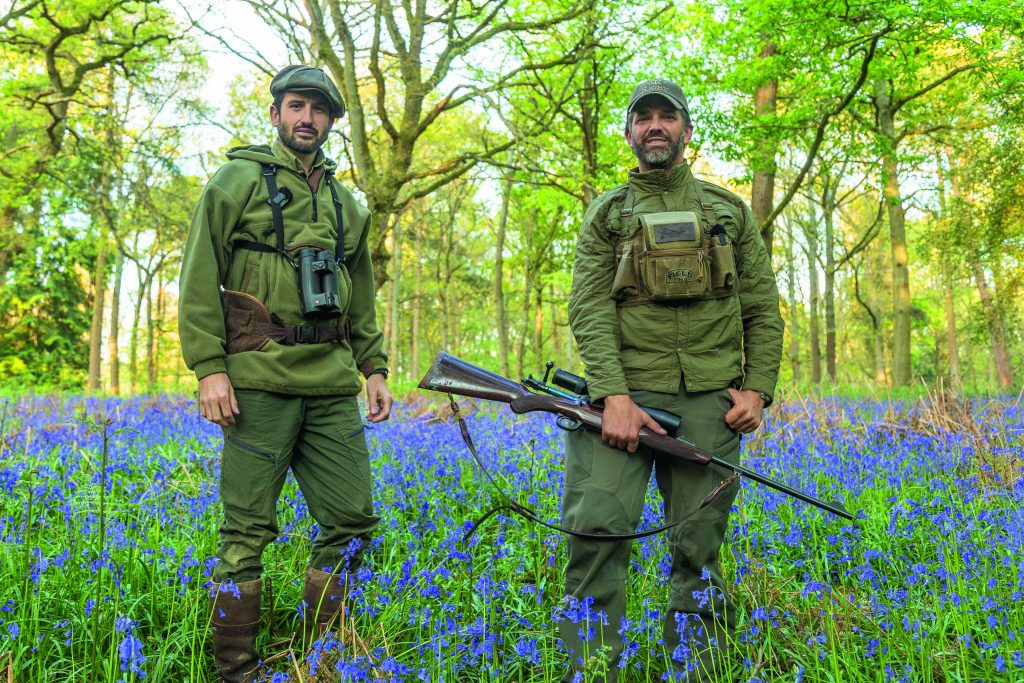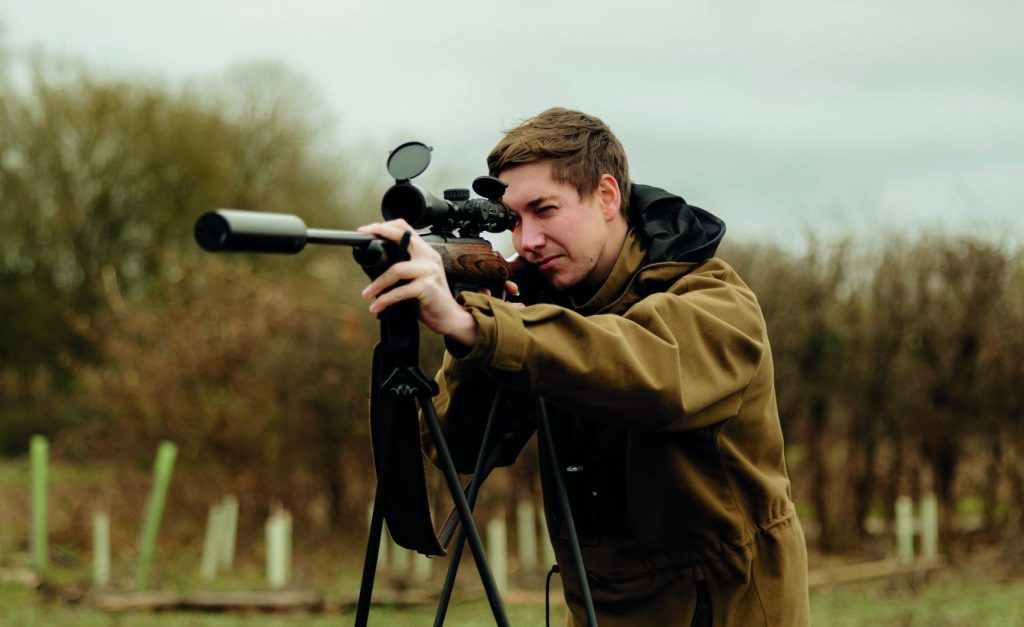Hunting bongo in Cameroon
Honest reflections on an unforgiving hunt in the Cameroon jungle by Lady Katie Percy.
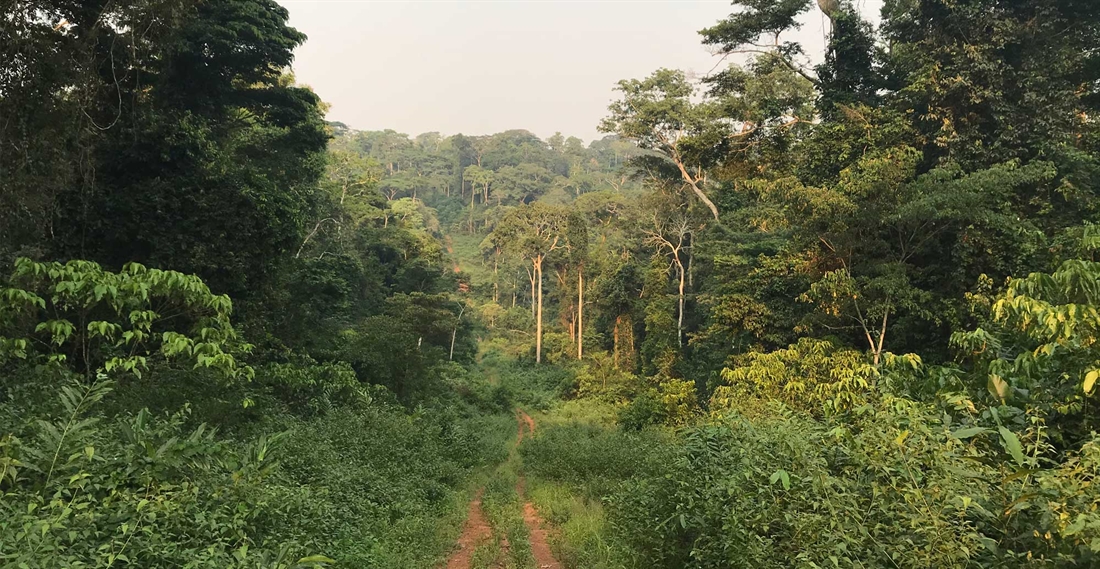
Holidaying in Cameroon is risky. Travellers are warned against venturing into the far north, north-west, south-west and anywhere within 20 miles of the borders of Nigeria, Chad and the Central African Republic where massacres, suicide bombings and terrorist attacks are not infrequent events. The West African country is plagued with diseases including malaria, yellow fever, sleeping sickness, cholera and loiasis (African eye worm). Mostly, though, I was worried about spiders; Cameroon is home to a tarantula known as the giant baboon spider which has an abdomen 4″ wide and legs that can span 8″.
But I really wanted to hunt with Pygmies – nowadays known as the Baka people – and shoot a bongo. I was not going to be deterred. In the end, the spiders were the least of my worries. It was columns of viscous ants and the oppressive, suffocatingly thick and humid jungle which almost defeated me and made this a hunting trip that tested me like nothing before.
I flew into the coastal city of Douala and from there I took a small plane to the marginally safer far south-east of the country, where the semi-nomadic Baka Pygmies live.
Each day at dawn I left the camp – a few huts consisting of a dining room, my bedroom and that of the Professional Hunter – and headed into the deep forest with Hervé the PH and his team of five Baka. We’d drive along old and overgrown logging tracks, scanning the red earth and the vegetation. If signs of bongo were spotted, we’d dismount and four Baka would follow it, hacking a path with machetes. Hervé and I would follow, with the fifth Baka and five small dogs behind.
With temperatures in the mid to high 30°Cs and humidity exceeding 90 per cent, the perceived temperature was in the high 60°Cs. It was punishing. The closeness of the forest, a multi-strata snarl, was unsettling: the sky was seldom visible and no breeze reached ground level. The vines, branches and tree trunks all had long, sharp thorns which shredded our arms and hands.
There were greater risks, though: the bongo is an aggressive animal, described as ‘a devil in the body of an angel’. This jungle is also home to the pugilistic dwarf forest buffalo, the forest elephant, leopards, gorillas, chimps, a healthy population of gabon vipers – one of the world’s deadliest snakes – and all manner of biting, stinging, poisonous insects.
But of all the creatures I could encounter, I did not expect it to be the ants that would plague me most. There were endless varieties of them on every leaf and branch. They dropped onto my head and shoulders and down my collar and ran amok on my sweaty torso, nipping and burning. Thousands of big black ants with huge pincers moved in long lines along the forest floor, and if someone stood on any part of the column, a hormone was triggered, causing them to attack with terrifying speed and determination, rushing up legs and under waistbands.
But despite the challenges, the jungle has an otherworldly magic. And, whilst you hear or sense the wildlife without seeing it much of the time, on the rare occasions the forest thinned, I’d see monkeys in the canopy, and hornbills and African grey parrots gliding above, a striking flash of their red tails among the green foliage.
In the case of the gorillas, we smelled them first – a strong, musky, almost sweaty aroma. We’d know then they had detected our presence, too, because we’d hear the males banging their chests – a fearsome bass drum beat, always in the same rhythm. One day a huge silverback crossed a track just in front of us and paused to look back: it was a couple of minutes in my life that I’ll never forget. A few days later even the Baka were dumbstruck when we found the knuckle prints of an even larger male.
The butterflies were extraordinary – by small puddles and muddy wallows rested every conceivable colour and size, some as large as sparrows. The most beautiful thing I have ever seen was when thousands took to the air in a clearing – an iridescent kaleidoscope flickering through dusty shafts of sunlight.
Early in the morning of the first day, we found signs of a large bongo on the edge of a track; a few leaves of a plant that bongo are known to enjoy had been nibbled. The Baka jumped off the truck and within a couple of minutes had found where the animal had reentered the forest. We could tell it was a big animal as four fingers fitted into the footprint rather than the average of three. It was also old: its droppings were squashed and stuck together – not the shiny, neat pellets of a younger animal. We set off on foot through the close, thorny verdure, but by the end of the day it was clear the great bongo had bolted.
In this part of the jungle, distinctive animal tracks were everywhere. By the end of the second day I could spot the difference between the hoof-prints of other antelope species such as sitatunga and the various species of duikers, and could pick out the print of a bongo with a limp from a snare. The Baka lay these traps everywhere and trade the meat in exchange for tools, alcohol and some cultivated foods with the Bantu, who they call ‘the tall tribe’ – the only other people they have contact with.
The Western Congo basin has been the Baka Pygmies’ home for tens of thousands of years. These people, who are rarely more than 4½ft tall, are exceptional trackers and rely on the forest for their survival. They monitor bees to obtain honey, fashion cups and hats from leaves, use vines to make utensils and rope, and roots to make medicine and poison for darts. These darts are fired from basic, homemade wooden crossbows at animals which are then tracked and found dead within 20 minutes. To catch fish they make a chemical from a crushed plant and disperse it in river water. The chemical deprives the fish of oxygen so they float to the surface and can be easily collected. On my second day in the jungle we found chillies and lived off them for the next week along with cremated sitatunga – good meat to these folk is when you have to chew it for hours.
The Baka live in small family bands in villages made of bamboo and mud, moving from one area of the forest to another when animals to hunt become scarce. Their numbers are in decline due to deforestation for timber and palm oil. And their troubles don’t end there: for generations the Baka people have had a tense relationship with their taller Bantu neighbours who view them as inferior. In the Republic of Congo many live as slaves, belonging to their Bantu masters from birth.
Perhaps it’s little wonder then that I found the Baka unfriendly. After a few days we had a measure of respect for each other, but I found it difficult to feel any warmth for them, primarily because of the cruelty with which they treated their dogs. To get the dogs into the back of the pickup they’d grab them roughly by the legs and hurl them through the air to land on machetes, petrol cans and chainsaws. Their constant yelps of pain were heart-wrenching. At least twice a day I heard myself barking the phrase “doucement avec les chiens!”.
The only dog in our pack that seemed to escape much of the abuse was a vicious, scarred, one-eyed black mongrel. In particular it was the smallest and weakest that tugged at my heartstrings: he was barely more than a puppy and struggled to get through the jungle. He would try to find routes around obstacles away from his masters’ machetes and, lagging behind would become distressed.
On more than one occasion I found myself walking like a tightrope artist along a fallen tree trunk resting precariously on top of other fallen trunks and nests of thorny branches, with the dog tucked under one arm. If the dog had fallen off the trunk it would have been almost impossible to retrieve him. These dogs rarely make four years old; they are frequently torn up by bongos, bitten by snakes or eaten by their owners. Most of the time they live tied to a stake in the ground outside their owner’s mud hut.
Even Hervé, who was used to the ways of the tribe, punched one of his men in the face for brutal treatment of a dog, growling in French: “That was a warning, next time I’ll break your neck.”
Hervé has spent most of his life in West Africa. In his mid forties, he wears a beret over his dark cropped hair and black t-shirt with khaki trousers. He is softly spoken yet commands attention for his huge knowledge and interesting tales.
Over time I’d hear of the many others who had not stuck it out. A sweet Bantu lady who helped in the kitchen and always came to meet me at the truck when I arrived back at camp, told me that many men had come here to hunt but had left after only a day or two because they hated the jungle so much. She said that my team respected me for being strong, but thought I was insane because of my care for the dogs.
By the end of our fourth day, after another mammoth hike, my team was dejected. When we finally came upon a monster bongo, we only had one dog with us and, despite a valiant effort, the little hound was not able to hold the huge antelope in one area.
A pattern had emerged: each day the only bongo prints we’d find were at least 16 hours old, so we entered the jungle knowing we were in for the long haul. After an exhausting day we’d eventually catch up with the quarry, then something would go wrong at the last moment. One day, for example, we stalked a large bongo from dawn until dusk and bayed it at last light, only to discover that it was female and therefore off the menu.
I was starting to fray around the edges and my mind began to wander down some strange paths. When the going got particularly tough, for instance when I was threading myself through a net of spiky vines in a thigh-aching plié-squat position and my hair was yet again snagged in thorns, to boost my morale I would pretend I was Lara Croft. One day we made a tricky river crossing: after wading across we were forced to scramble up a steep, muddy bank. Most of us slipped back down several times before reaching the top. Upon resuming into the thick vegetation, the Baka in front, carving out a tunnel, I heard a faint whimper: the timorous dog hadn’t been able to cross the river. What would Lara Croft do? I ducked back through the faint path. Sliding down the muddy bank, I spotted the little fellow pacing back and forth on the far side, looking terrified. I ploughed across the current and scooped him up, waded back, pushed him up the bank and hurried to catch up with the men. But the jungle had closed in behind them and I couldn’t find the hole they’d cut. Nor was there a sound to follow as we were quietly stalking a wary animal. I crawled through the only window in the foliage I could find and carried on until, thank God, I saw a human footprint. I was on the right path and eventually heard the sound of machetes against vines.
The dog’s name was Dragon and he stayed by my side for the rest of my time there. He was emaciated, filthy, covered in ticks and fleas, had a chunk missing from one of his huge bat ears and scars on his head. I spent a lot of time thinking about how I might get Dragon out of there. I couldn’t bare to leave him to his suffering. I doubted he’d survive another month with the Baka. Perhaps I could get him to South Africa where my brother lives…
On the fifth day, I finally found a bongo in my sights. For six hours we followed two mature males; their tracks separated for hundreds of yards and then joined again, winding through the jungle in a great figure of eight. Eventually we came upon the bongos in the densest vegetation possible. It was suddenly chaos as the dogs surrounded them, yapping and darting.
I couldn’t see either animal properly but as the older of the two spun this way and that to keep the dogs at his front, he caught sight of us and took off.
The other bongo bull was only about 20ft away from me and still being bayed by the dogs but, with so much plant life between us, it seemed like a hundred yards. I could only see unidentifiable sections of white stripes on vivid orange, so bright in the gloom that it seemed to glow, although I knew it’s head would be down, sweeping its horns from side to side, ready to skewer any dog that got too close.
For what seemed like an eternity I waited for my opportunity; the undergrowth was too thick to allow me to move anywhere so I had to take my shot from where I was. There was only the tiniest, inches-wide window in the vegetation.
Suddenly the upper half of the animal’s front right leg perfectly aligned in my little window, slightly quartered away, ideal for a heart shot. I fired almost unconsciously. The dogs went quiet and the animal fell dead.
The head-tracker beside me slapped my shoulder, grinning and nodding. The Baka were now in great spirits and talked more in that hour than they had in the whole of the five previous days. They sang all the way back to camp in thanksgiving to Jengi, their god of the forest. And when we arrived in camp the celebration continued as the families of the Baka and a handful of Bantu staff danced around the truck, clapping and singing and shaking my hand. I was obliged to get down and dance around as well.
I stayed in the jungle for another four days searching without success for buffalo but my mind was elsewhere now: I was trying to work out how to save Dragon.
With a mountain of bureaucracy and the help of a heroic PH called Peter, three weeks after my departure from Cameroon, Dragon was evacuated. First to Doula, then Paris and on to a quarantine station near Heathrow. It was an expensive and exhausting process.
But it was all worth it: Dragon is at this moment gnawing on a pig’s ear on the sofa beside me in Northumberland. His confidence has sky-rocketed and he is beginning to pick-up pheasants, though I suspect he will make a better stalking companion than retriever.
Related Articles
Get the latest news delivered direct to your door
Subscribe to Fieldsports Journal
Elevate your experience in the field with a subscription to Fieldsports Journal, the premium publication for passionate country sports enthusiasts. This bi-monthly journal delivers unparalleled coverage of game shooting, fishing and big game across the UK and beyond.
Each issue offers a stunning collection of in-depth features, expert opinions and world-class photography, all presented in a timeless yet contemporary design.
Save 10% on shop price when you subscribe, with a choice of packages that work for you. Choose from Print & Digital or Digital only with each journal delivered directly to your door or via the app every other month, plus access to past issues with the digital back issue library.






